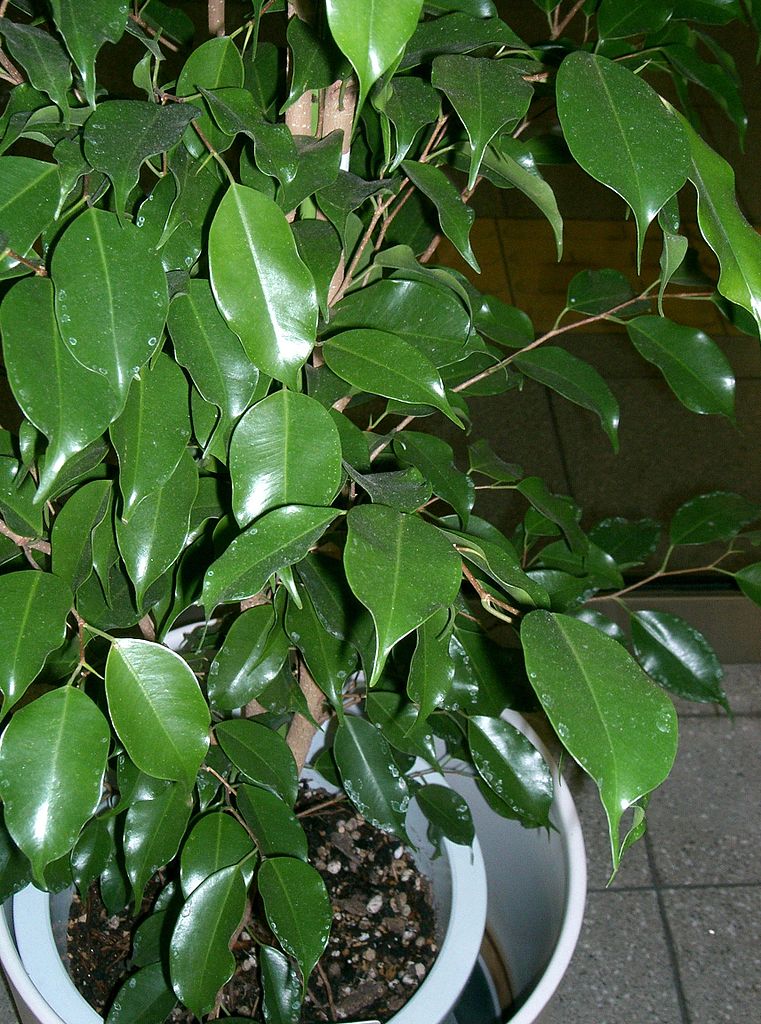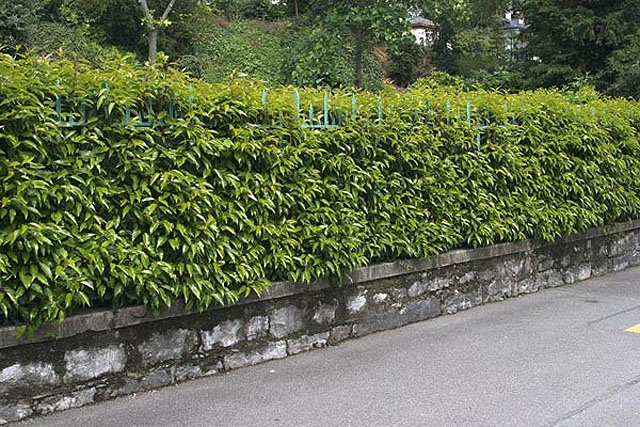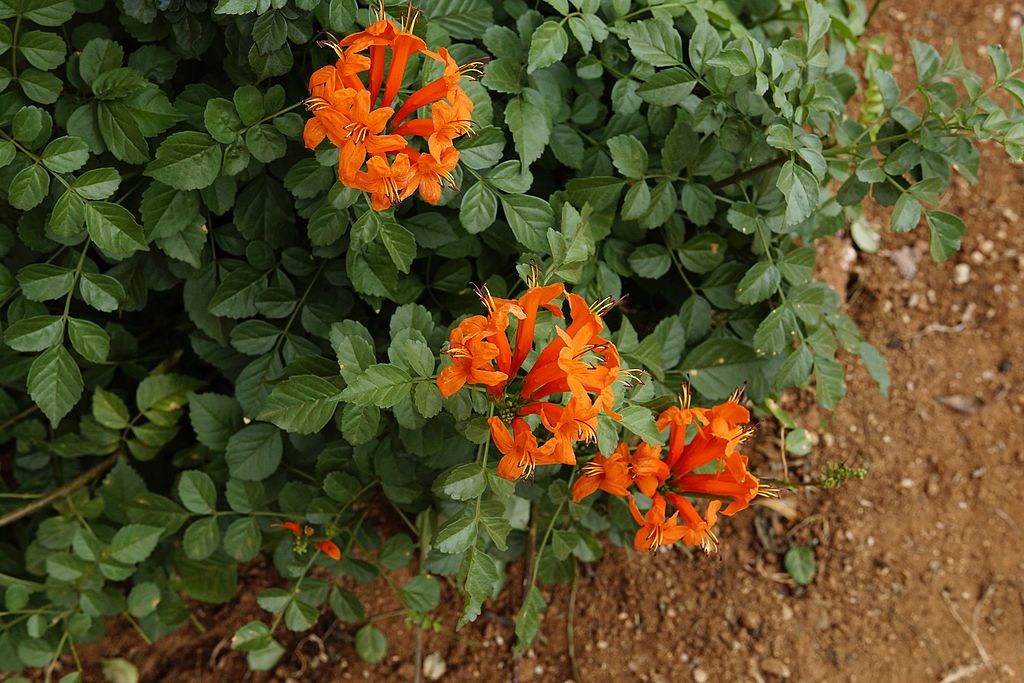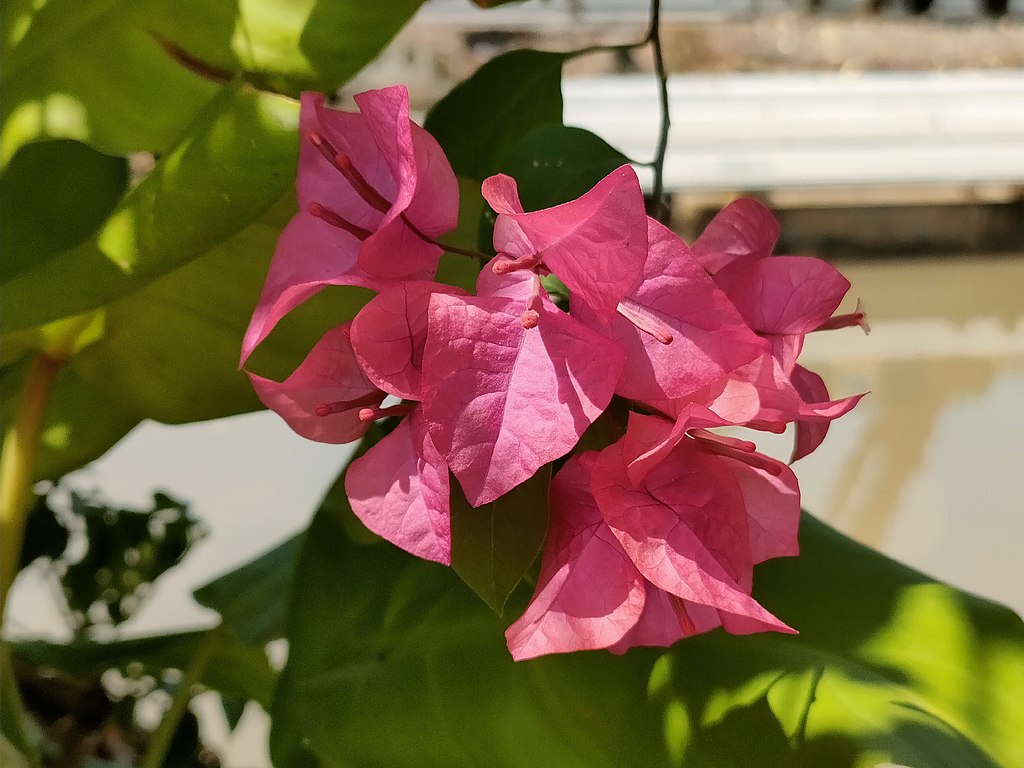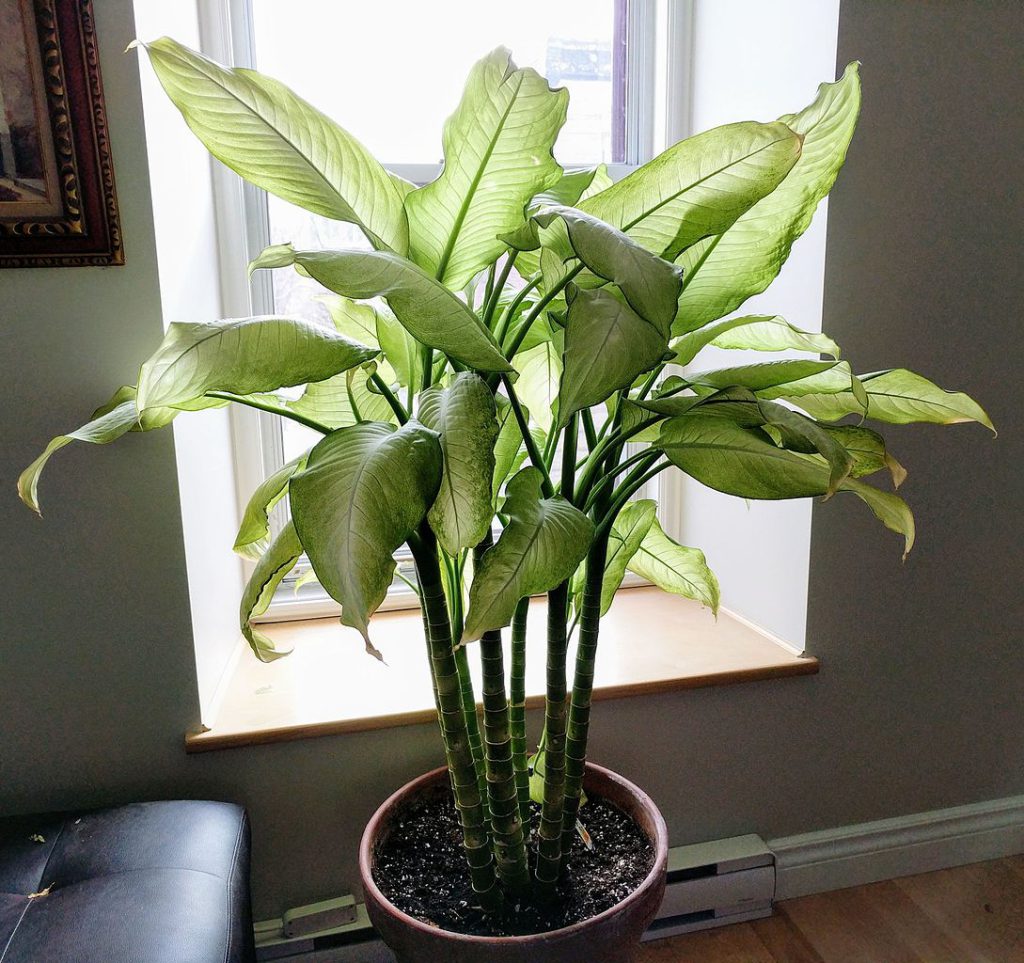Weeping figs (benjamin fig) are some of the most beloved houseplants.
This tree-like houseplant can reach up to 2.5m (8 ft) in height and has two varieties: variegated leaves and (regular) green leaves. The weeping fig’s leaves are slender with a glossy finish, and its small white flowers bloom year-long, although they lack any sort of aroma or scent. The Ficus Benjamina is a great choice for adding a touch of nature and texture to your living spaces and providing natural air filtration throughout your house.
Ficus benjamina, also known as Benjamin figs or weeping figs, are quite low maintenance once you find them the right spot. Nevertheless, there are a few important things to keep in mind when it comes to watering and fertilising your weeping fig to prevent it from losing its leaves and to keep it happy and healthy.
Watering
Benjamin figs are relatively easy to care for, making them some of the most popular office plants and houseplants.
Ficus benjamina needs a moderate amount of water, so only water your weeping fig once the soil feels quite dry. Simply use your finger to check whether the top layer of soil is still moist. If the soil feels dry in the top 2 to 3 cm, water the plant. If the growing conditions are good, you will usually need to water your Benjamin fig about once a week. You may need to water more or less often depending on the size of the pot, plant, and temperature of the room. Lukewarm rain water is ideal for watering Ficus benjamina. Alternatively, you can also use tap water that has been left out for while. Since Benjamin figs do not tolerate waterlogging, check the saucer or planter about 15 minutes after watering and pour off any excess water. Water less in winter, but do not allow the root ball to dry out completely.
Sunlight
The second most important part of keeping your Ficus Benjamina happy and healthy is giving it the right type of sunlight. A weeping fig needs bright, indirect light to thrive. Place your weeping fig near a window that gets some sun but not too much full sun. This will ensure your weeping fig gets the perfect amount of light and won’t get scorched by direct sunlight.
Weeping figs are plants that love to live in warm, tropical environments with indirect light, so they don’t like to be exposed to direct sunlight. You’ll know if your plant is getting too much direct sunlight because its leaves may start to turn yellow or brown and they will become dried out.
However, a weeping fig does need to get some sunlight so that it can do photosynthesis and stay healthy. To keep your weeping fig flourishing, try finding a spot with bright but indirect light – like near a window that has sheer curtains or blinds.
Ficus Benjamina needs 4-6 hours of bright, indirect sunlight per day to thrive. Placing your weeping fig near a south-facing window (if you live in the northern hemisphere) or a north-facing window (if you live in the southern hemisphere) will give it the perfect amount of light.
To keep your weeping fig looking its best and growing healthy, you should rotate it every 3-4 weeks. That way, all sides will get an even amount of sunlight. This will help ensure that the plant doesn’t grow lopsided or in an uneven pattern. Doing this regularly will also encourage strong growth for your weeping fig!
By following these simple tips, you can ensure that your weeping fig is getting just the right amount of sunlight each day!
Soil
Benjamin fig plants love to be in moist, not wet soil. When you’re repotting your Ficus Benjamina, it’s important to use soil that helps create the perfect growing environment for your Weeping fig.
You should use a light, well-draining soil mix to help the plant’s roots get enough oxygen and prevent them from standing in water for too long. A great mix includes loam, peat moss, perlite or vermiculite, compost or aged manure, and fertilizer for essential nutrients. Make sure the pH levels of your soil are between 6-7 so that the plant can absorb all nutrients!
Fertilising
To ensure that your benjamin fig grows well, give it a bit of complete fertiliser at the beginning of March. Simply work some of the fertiliser granules into the top layer of soil and cover everything with a layer of mulch. Weeping figs do not need any additional nutrients during the winter months.
Pruning benjamin fig
Prune any branches that are drying out and remove all the yellow leaves so that the plant can channel its energy into the strong leaves rather than those that will fall anyway.
From the branches that you cut you will see a white gelatinous liquid come out, like what poppies produce when you cut them. Avoid contact with this and wash your hands well because in some people it can cause slight itching.
If the benjamin has grown taller than you would like, prune the top off. This will channel more of the plant’s strength into growing the lower branches and make it more tufted.
Pruning plants that tolerate pruning well, like Ficus benjamina, encourages them to put out new growth. Aside from removing unsightly dried or dead branches, pruning can also help keep Benjamin figs small and compact or rejuvenate them. Here is how to prune weeping figs:
Cut shoots to the desired length, but always just above a leaf node.
Every spring, Benjamin sheds countless new leaflets and thin twigs, but not all of them survive.
Prune for better branching: it is best to prune your weeping fig in spring. Prune all shoots at the tips rather than toward the inner part of the ficus tree. Pruning in spring leads to stronger branching, but also costs the plant a lot of energy.
Rejuvenation pruning: if your Ficus benjamina is bare or mature, shorten all branches to one third of their original length. This is best done in late winter. Rejuvenation pruning is ideal for renewing the sparse crown of the plant, but it may take a while for your Benjamin fig to branch out.
After a hard pruning, repot your weeping fig into fresh soil.
Greek name: Μπέντζαμιν.
Sources: https://www.valentine.gr/benjamin_gr.php, https://plantura.garden/uk/houseplants/ficus-benjamina/ficus-benjamina-care, https://plantcareforbeginners.com/articles/how-to-care-for-a-weeping-fig-ficus-benjamina
Tags: ORNAMENTAL PLANTS

